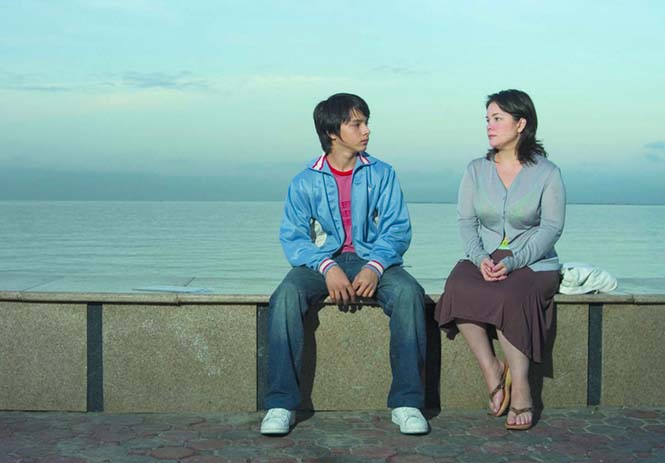To date, Cinemalaya has nurtured over 200 Filipino filmmakers and showcased over 1,000 of their works, including full-feature films, shorts, documentaries, Filipino film classics, and art films.
The country’s biggest and pioneering independent film festival has been relentless in developing and supporting the production of independent Filipino films since it was founded in 2005, bringing new narratives that embody the ever-evolving landscape of Filipino cinema each year.
Shortly after celebrating its 20th year, the Cinemalaya has once again welcomed another batch of filmmakers for their turn in articulating and freely interpreting the Filipino experience with fresh insight and artistic integrity. With two decades under its belt and more than a handful of filmmakers bolstered to success, we look back to some of the pioneers who started the tradition.
“I remember some of that time very clearly. I remember the sense of freedom, the sense of fun,” began 2005 Cinemalaya director Mario Cornejo. “At that time, nobody knew what Cinemalaya was, so when they said they would give a grant to make a film, all we could think of was ‘okay. Let’s make a film’. There were no stakes, kunbaga, very low stakes. There were no expectations. It felt very free.”
Cornejo is a director for movies, television shows and television commercials. He is currently an in-house director for television commercials at Film Experts Inc. He debuted his full-length film Big Time, a comedy-drama that follows the misadventures of two small-time criminals, Danny and Jonas, who run into a series of unforeseen events when they attempt to move into big time crime.
The film won the first Balanghai trophy for Best Screenplay.
“It was super fun for us not because of the awards we received, but because it was a good excuse to thank people who were part of the film,” shared Coreen “Monster” Jimenez, who was Big Time’s co-writer and producer. “Everybody was super cooperative because people were just trying things out. It felt like a playground.”
Jimenez is a producer, filmmaker, mentor and documentary advocate. She is the managing director of This Side Up, a media company based in Manila, and the co-founder of the Filipino Documentary Society, which organized the biggest documentary fest in the Philippines. She is currently in pre-production for another collaboration with Cornejo for the film, My Neighbor the Gangster.
For distinguished screenwriter Cloudualdo del Mundo Jr., his first exposure to full-length filmmaking was through the first ever Cinemalaya Philippine Independent Film Festival. He debuted with Pepot Artista, a comedy-drama film about a ten-year-old boy whose dream is to become a movie star. The film explores the penchant of Pinoys for entertainment in the midst of serious social problems.
Del Mundo is an esteemed figure in the Filipino film industry. He is a multi-awarded writer, director, and producer. He is also the professor emeritus of the Department of Communication in De La Salle University. Some of his recent accolades include being a 2020 Gawad CCP Para sa Sining Awardee and a recipient of the Parangal ng Sining Lifetime Achievement Award.
“Sinulat ko ‘yung screenplay ng Pepot Artista noong 1970. Nasa graduate school ako nun, may kinuha akong tutorial course tungkol sa scriptwriting,” shared del Mundo. “Natatandaan ko si Ishmael Bernal, pinuntahan pa ako sa bahay. Nagtatanong kung maisasapelikula ba ‘yung script ko.”
But it was only in 2005 when Pepot Artista came to life at Cinemalaya. It won the first Balanghai trophies for Best Film and Best Editing. Del Mundo found it interesting that an old screenplay of his would even have a chance.
“In Pepot Artista, I was assisted by many of my students. Ganun talaga ‘yung paggawa ng indie films, e, ‘no? Maski hanggang ngayon, kailangan gamitin mo ‘yung mga kaibigan mo, ‘yung mga kakilala mo, para sa pelikula.”
Cornejo and Jimenez also acknowledged the sense of community and support in making independent films, and one key difference from then to now is the growing number of voices.
“Cinemalaya really changed the way people thought about making films,” said Jimenez. “It had such an impact on every filmmaker, especially the budding filmmakers.”
“It changed my life completely,” agreed Cornejo, who was hired by a studio to do another film right after Cinemalaya. “I only want it to be a better festival every year because of what it did for me and what it does for Philippine Cinema.”
The tandem went on to say how independent film now is in a much better place than when they started 20 years ago, with Cinemalaya still being a major testament that anyone can do films.
For del Mundo, who already had a steady career in the industry at that time, Cinemalaya gave him the opportunity to direct a full-length film: “Even before Cinemalaya, I was already typecast as a screenwriter. I was already doing short films and documentaries but I really wanted to direct a full-length film. It was very satisfactory that I was able to do Pepot Artista because of Cinemalaya.”
When it comes to thriving in the craft, all three filmmakers urge aspiring independent filmmakers to persist and just make the films they want to do.
“You just have to believe in yourself and in your story, and find a way to get that story made and that story told,” said Cornejo.
For its next editions, Cinemalaya will surely continue to uphold its vision to discover, encourage, support, train and recognize gifted Filipino independent filmmakers.






















































































